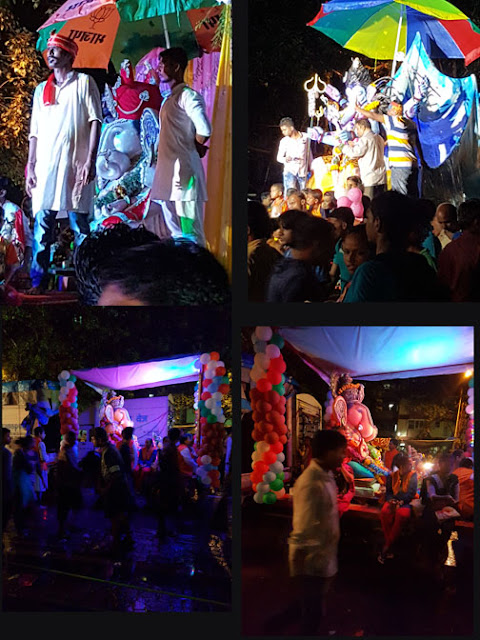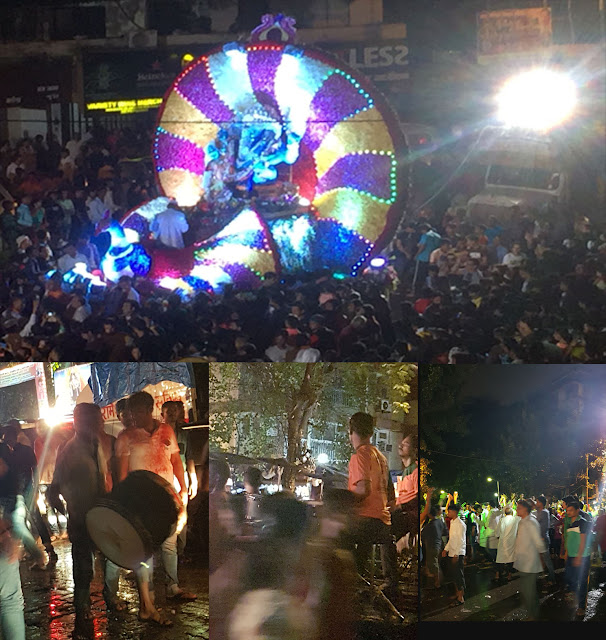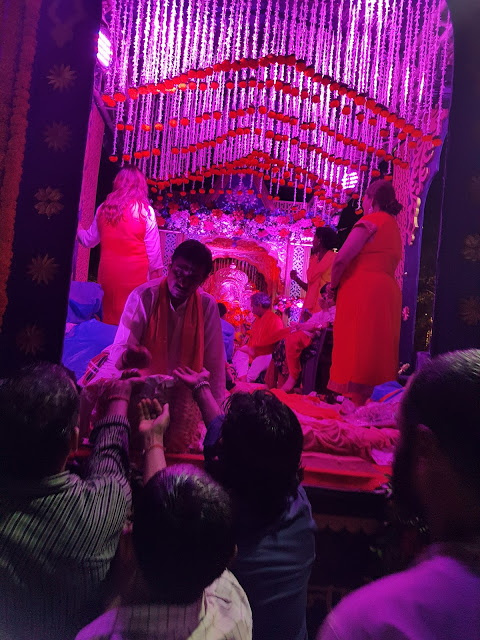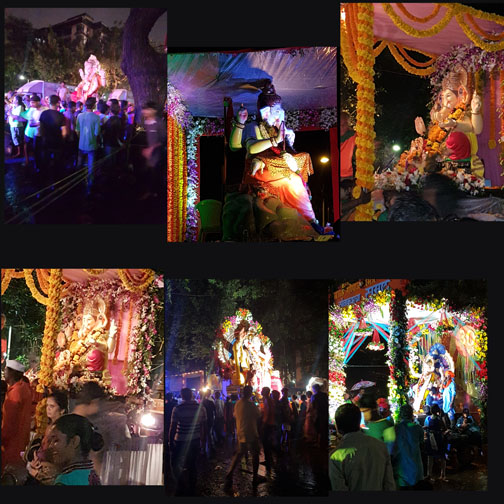If you are visiting Mumbai in the month of September, Ganesha festival is the event you cannot miss.
September is the auspicious month of the year, when Lord Ganesha enters the state of Maharastra bringing in the positive vibrations and the spiritual aura in the air. The festival begins on Shukla Chaturthi, which is the fourth day of the waxing moon period, and ends on the 14th day of the waxing moon period known as Anant Chaturdashi. It is celebrated to honour the elephant-headed God Ganesha’s birthday.
Ganpati is brought into the house with much funfair. All day long, guests keep coming to offer their prayers. Different families honour Ganesha in their homes on different number of days, some just one and half day, some five days and some eleven or fourteen days. There are four main rituals during the festival – Pranapratishtha- the process of infusing the deity into a idol, Shhodashopachara-16 forms of paying tribute to Ganesha, Uttarpuja- Puja after which the idol could be shifted after its’ infusion, Ganpati Visarjan- immersion of the Idol in the river. At the end of the stay, families say a small prayer and then take it to drown it in waters, to melt away the clay used for moulding Ganesha.
The arrival and the departure of Ganesha is celebrated widely on the road. It is a huge street party like Hindu Carnival with music, dance and eats. This year, I had an invitation to watch the procession of departure (called Visarjan) from my friend’s house who lives on a busy street. The food was cooked in her building to cater to more than thousand people. There were Samosas, Puris and potatoes vegetables. A large serving station for food and drinks was installed outside her building facing the road. People moved in long serpentine queue, picking up the food and drinks and joining in the procession.
We sat on the plastic chairs placed on the foot path outside her building and watched the continuous stream of large Ganesha idols, each with their own set of music and devotees. There was celebration spirit everywhere, people perched on the top of the trucks, cars, gyrating to loud Bollywood music or to beat of drums.
Some people were dressed in fancy dress, some in silk sarees, but the spirit of celebration was everywhere. It was a huge crowd, all moving in one direction, all walking towards the beach, where they will have their final prayers. At the end of the prayers, people take turns to whisper their desires into Ganesha’s large ear with the promise that they will celebrate the same festival with equal jest the next coming year if their wishes are granted. The idol are then taken deep into the waters and allowed to drown.
We sat on the street for more than four hours, there was never ending train of procession with Ganesha of different shapes and sizes, some artistically done with innovative ideas. Many of the idols had a priest sitting at the foot of Ganesha offering prayers to anyone who wishes to and prasad (normally Modak) was distributed to the passerby. Modak, a sweet dish is prepared using rice or flour and is stuffed with grated jaggery, coconut and dry fruits. The plate containing the Modak is supposed to be filled with twenty-one pieces of the sweet.
Initially it used to be a private celebration in a Maharashtrian homes, but an Hindu leader, Lokmanya Tilak changed the festival to a grand public event to bridge the gap between Brahmins and non-Brahmins and find an appropriate context in which to build a new unity between them. During the festival, many people hop from one pandal to another, to see the creativity of different idols across the city. In Mumbai, Lal Baugh ka Raja is the favourite idol and draws devotee in millions.
While we may complain about noise and pollution of Ganesha festival, nobody will disagree that it has spiritual inclination. The electricity of joy is in the air, there is love, devotion, prasadam, you cannot stop tapping your feet at the loud beating of drums, or joining with your dancing shoes. It was a great experience watching the huge procession while we remained seated at the side path. Nevertheless, I was saddened that they would finally drown the idols in the waters with broken limbs washed off on the beach the next day.
 |
| picture courtesy- Rhea |
However, this year the responsible citizens (mainly young active civic citizen) had taken up the task of cleaning the beaches along with CMCA-A NGO that works with children to improve our society. The children were back to the beach the next day, picking up the broken limbs of the idols and cleaning up the beaches.
cross posted at https://niume.com/pages/post/?postID=101815
cross posted at https://niume.com/pages/post/?postID=101815






1 comment:
Hi this is very useful post for everyone. good explanation about this festival. Nice pictures and very informative...Thank you so much this post.
Online Cab Booking
Post a Comment